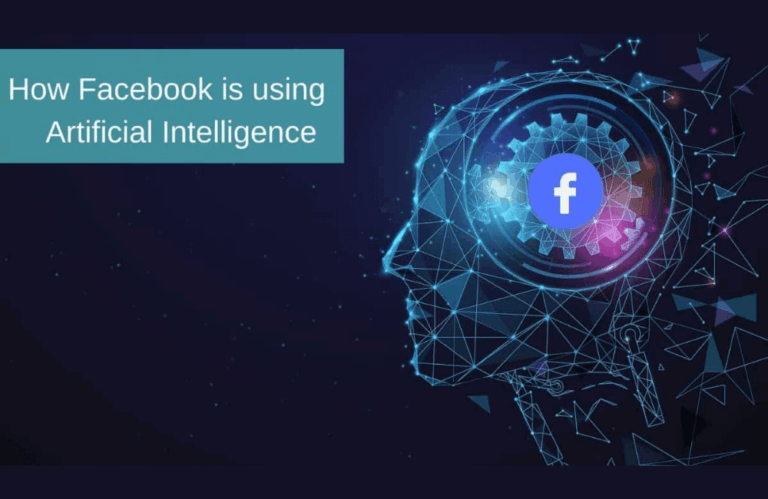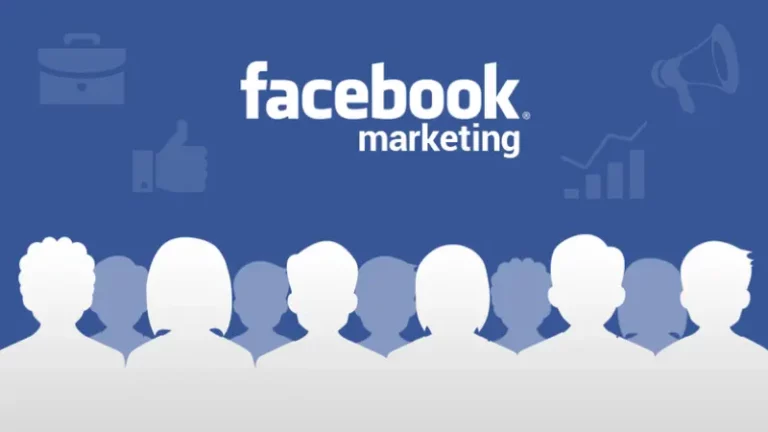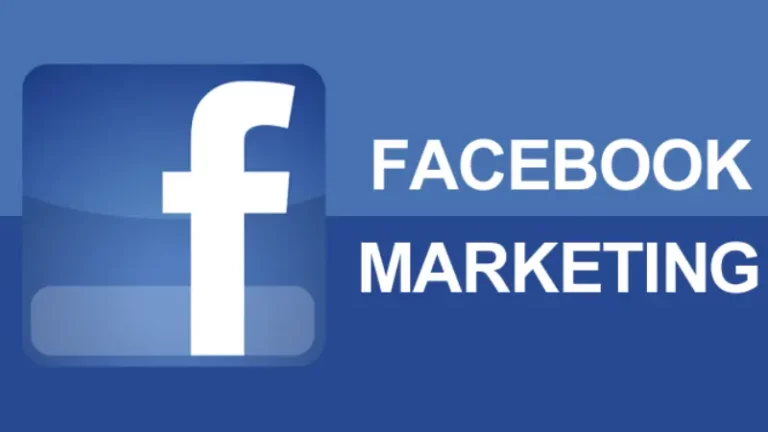In an increasingly fierce competitive landscape, many business owners are still struggling with creating content that doesn’t bring in real customers. They diligently shoot videos, post articles, and answer comments all month, but when they look back, hardly any orders have come from Facebook. Conversely, if you know how to marketing on Facebook with the right system, every post can become a strategic tool: attracting the right customer segment, leading them to a purchase decision, and turning marketing efforts into tangible revenue.
In this article, Optimal Agency will share with you 10 of the most effective Facebook marketing strategies for 2025. Some strategies may be new, but if applied correctly, they will certainly help businesses, from e-commerce stores to local services, sustainably increase their ROI (Return on Investment).
4 Changes to Facebook advertising in 2025: Is Facebook Ads still effective?
Many of you in marketing must have heard the phrase: “Facebook Ads are dead.” However, looking at the reality, we see countless new brands joining every year, and many brands even achieve 6, 7, and 8-figure revenue growth thanks to Meta Ads. This shows that Facebook Ads are not disappearing but are constantly changing.
The question is not whether Facebook Ads is still effective, but whether we can adapt to that change. Moving into 2025, there are 3 major changes you need to grasp if you want to maintain a competitive edge and continue to break through revenue.
AI and the algorithm are increasingly superior

If, in the past, we had to spend hours researching detailed audience files, selecting small interests of a few hundred thousand people to accurately target customers, now everything has changed completely. Facebook’s AI is increasingly smart, capable of automatically analyzing behavior, trends, and accurately determining who the potential customers are.
For example, instead of trying to over-control and limit the audience scope, we often advise you to run “broad” ads and let the AI work. In fact, the AI continuously learns from daily data; the longer you run, the more accurate the algorithm becomes. Thanks to this, many brands are no longer struggling with “selecting the right file,” but instead focus more on the product, message, and customer experience.
Rising advertising costs
We cannot deny that CPM (Cost Per Mille/Impression), CPA (Cost Per Action/Conversion), and the general Cost Per Purchase are constantly increasing. However, this is not bad news if you have a truly attractive product and a clear message.
For instance, one of our clients spent $50,000 in just 30 days but brought in $140,000 in revenue, achieving a 3x ROAS. Another example: a brand spent only $5,000 but brought in $23,000 in revenue, achieving a 4.58x ROAS. This proves that high cost is not the issue; the important thing is whether you know how to leverage AI to connect the right product with the right customer who is ready to buy.
Incorporating necessary measurement metrics
In the 2025 context, understanding financial metrics like CAC (Customer Acquisition Cost) and LTV (Customer Lifetime Value) is mandatory for any advertiser.
For example, if a customer has an LTV of $100 but you spend $110 to acquire that customer, you are clearly losing money. However, many brands now accept breaking even on the first order because they understand the customer will return to buy a second and third time. In that case, LTV is higher than CAC, and long-term profit is still ensured.
This is how many large brands maintain growth: they don’t just look at immediate results but build a sustainable marketing and customer nurturing strategy.
Creativity is the core of Facebook Ads
If, in the past, only large brands with budgets of hundreds of thousands of dollars could produce grand TVCs, everything has changed now. Facebook and Meta are prioritizing UGC (User-Generated Content) – short videos created by customers, creators, or KOLs themselves, with a familiar, authentic style.
For example, a 30-second product review video shot on a phone, demonstrating the experience, can bring many times the effectiveness of an elaborately staged TVC. The important factors are naturalness, credibility, and the ability to connect emotionally with the viewer. This is the element that helps a brand build sustainable trust in the hearts of its customers.
Are Facebook Ads still effective in 2025?
The answer is definitely yes, but only if you change your mindset. We believe:
- Don’t try to “fight” the AI; let the AI work for you.
- Build a marketing funnel appropriate for each stage of customer awareness.
- Always update and test new creatives to avoid creative fatigue.
In other words, Facebook Ads is not “dead.” It has simply changed – and we, the advertisers, also need to change to continue winning big.
10 Most effective how to marketing on Facebook in 2025
Facebook remains one of the most powerful platforms for advertisers and businesses to reach potential customers. However, to turn marketing efforts into real revenue, we need a clear strategy instead of running ads based on feeling. Below are the 10 effective marketing methods we recommend for you in 2025.

Define your target audience and ideal customer profile (ICP)
The first and most important step is to clearly understand who your Ideal Customer is. Otherwise, you will waste your budget very quickly. We often advise you to use demographic data (age, gender, location), online behavior (shopping habits, social media usage time), and interests (pages they follow, content they usually watch). In addition, you should try applying the Facebook Marketing funnel creation strategy to attract interested customers to help optimize your budget.
For example, if you are selling cosmetics, you need to know that your main customer segment is women aged 25–40, living in big cities, and often interested in skincare and beauty. Statistically, up to 51.1% of Facebook users are in the 25–44 age range, which is an excellent opportunity for accurate targeting.
Don’t guess. Utilize the Meta Audience Insights tool, Google Analytics, data from your CRM, and even directly interview current customers. The better you understand your customers, the more effective your ads will be.
Adjust ads for each audience Segment
One ad cannot fit all. Each customer segment needs a specific message and format to create a connection. For example:
- Cold Audience (unaware of the brand): Use a storytelling video, focusing on the problem they are facing.
- Engaged Audience: Provide knowledge, social proof, or a trial offer.
- Past Customers: Upsell premium products, a loyalty program, or a limited-time offer.
Assume your ICP includes suburban mothers and office professionals in the city. These two groups have completely different buying habits and motivations. We often advise you to create separate ad sets for each group, analyze the data from Meta Insights to determine which group brings the highest ROI, and then focus the budget on that group.
Select mobile-friendly ad formats
With 84.5% of Facebook users only accessing it on mobile, if your ads are not optimized for mobile, you almost lose the opportunity to reach them. Some notes when running mobile-first ads:
- Use vertical video (9:16) for Stories and Reels.
- Short, easy-to-read headlines on a small screen.
- High-contrast images that grab attention when scrolling quickly.
- Clear CTA (Call-to-Action) that is easy to tap with a finger.
For example, if you are selling fast food, use a vertical video of the hot food with an “Order Now” button. Also, don’t forget to optimize the landing page on mobile – if the website loads slowly or displays errors, you will lose the customer immediately.
Showcase multiple products with carousel ads
Carousel Ads are a “powerful weapon” for e-commerce, as you can display up to 10 product cards in one ad. Advantages:
- Gives customers more options.
- Can tell a story step-by-step (e.g., Before → During → After using the product).
- Each card has its own link, increasing the conversion rate.
For example: If you sell furniture, create a Carousel Ad from a sofa → coffee table → rug, helping customers visualize the complete product set. Additionally, you can use Advantage+ Catalog Ads to dynamically display products that customers have viewed on the website, which increases the likelihood of closing a sale.
Build an email list with lead ads
An email list is a long-term asset for your business. Instead of just running ads to sell immediately, you can use Facebook Lead Ads to collect emails and nurture customers. For example:
- Offer a free e-book guide on skincare.
- Provide a 10% discount code for the first purchase.
- Invite them to a free webinar.
The great thing about Lead Ads is that customers can fill in the information right on Facebook, without leaving the application, which is extremely convenient on mobile. Then, you can synchronize this list with Mailchimp, HubSpot, or Salesforce for automated nurturing. Tips for advertisers:
- Only ask for the necessary information (name, email).
- Use an offer attractive enough for customers to willingly leave their information.
- Set clear expectations: what the customer will receive after filling out the form.
Most importantly, don’t forget to run remarketing to this list with valuable emails or nurturing ads to turn potential customers into real buyers.
Build a Facebook Ads campaign using the Full-Funnel model
Not all potential customers are the same. For example, someone seeing your brand for the first time certainly needs a different message than someone who abandoned their cart just yesterday. That’s why we—as advertisers—always encourage you to build a clear Facebook Sales Funnel, including 4 stages:
- Acquisition – Prospecting: Reach completely new customers (cold audience) with engaging content like product introduction videos or value-sharing articles.
- Acquisition – Re-Engagement: Target those who have previously liked, commented, or shared your posts.
- Retargeting: Focus on potential customers who have viewed products or added them to the cart but haven’t purchased.
- Customer Retention: Encourage past customers to make a second purchase, for example, with a thank-you voucher.
At each stage, the ad needs to be designed appropriately:
- Top-of-Funnel (TOF): Video ads, UGC (User-Generated Content), or blog content to attract interest.
- Middle-of-Funnel (MOF): E-book giveaways, webinars, or product explanation videos.
- Bottom-of-Funnel (BOF): Limited-time promotions, genuine customer reviews, or urgent CTAs.
Regarding budget allocation, we often recommend dividing it as follows: 60% for prospecting, 20% for re-engagement, 15% for retargeting, and 5% for customer retention. This structure helps ensure every dollar spent is optimized.
Set up tracking with Facebook Pixel and Conversions API
Facebook Pixel is the tool that helps you know which products customers have viewed, how they added them to the cart, or whether they completed a purchase order.
The first step is to install the Pixel on your website, verify the domain, and prioritize the 8 most important events (e.g., purchase, add-to-cart, lead form submission…). However, since the iOS 14 update, many users have the right to refuse tracking, which restricts Pixel data.
This is where the Conversions API (CAPI) comes into play. This tool allows data to be sent directly from the server to Meta, independent of the user’s browser. For example, when a customer completes a payment, the purchase event is still accurately recorded even if they block cookies.
Pro Tip from us: Combine both the Pixel and CAPI to ensure the most complete data. The result is more accurate tracking, better ad optimization, and a clear improvement in the ROAS metric.
Use video ads to boost engagement and trust

In 2025, video is no longer a “nice-to-have” but a must-have. Surveys show that over 90% of businesses use video in their marketing campaigns, and most report significantly higher effectiveness than static images. Video is appealing because:
- It easily catches the eye in a newsfeed flooded with text content.
- It can explain a product in just a few dozen seconds.
- It quickly builds trust and emotional connection.
For example, a cosmetics shop can run a 30-second video tutorial on how to use a serum, accompanied by genuine customer reviews. The video format should be optimized: Reels to boost engagement, In-Feed Video for product demos, and Stories for a fast, vertical experience.
A few tips we advise you to apply:
- Keep the video under 60 seconds.
- Always add subtitles (most viewers don’t turn on the sound).
- Focus on a single message.
- Convey value in the first 3 seconds.
Crucially, don’t worry too much about professional production. Often, a “lo-fi” video shot on a phone brings a higher engagement rate than a glossy corporate video.
Discover new customers with interest targeting
If you are a new advertiser or don’t have enough data from the Pixel, Interest Targeting is the primary solution. Facebook allows you to reach customers based on:
- The pages they follow.
- Their past purchasing behavior.
- Competitor brands.
- Job titles.
For example, if you sell gym wear, you can target the “yoga,” “fitness,” or “Adidas, Nike” groups to attract people with genuine needs.
Our tip is: layering interests with age, gender, and location for greater precision. Don’t just run ads to “everyone who likes travel” – limit them to the 25–35 age group, living in Ho Chi Minh City, and frequently interacting with luggage brands. As you test and refine gradually, the campaign will become increasingly accurate.
Retarget website visitors and engaged users
We always remind you: not everyone buys the first time they see an ad. In fact, only a small fraction converts on the first exposure. That’s why retargeting is extremely important. With Facebook Pixel or CAPI, you can create audiences consisting of people who have:
- Viewed a product page.
- Added a product to the cart.
- Watched your ad video.
- Messaged the Fanpage.
- Interacted with Instagram.
Next, divide the groups according to customer “temperature”:
- 1–3 days: “Hot leads” need immediate purchase push.
- 7–14 days: “Warm leads” need additional social proof or a small offer.
- 30+ days: “Cold leads” need to be re-nurtured.
For example: a customer adds a product to the cart but doesn’t check out → send a reminder ad with a 10% off voucher. This is how to optimize ROAS and fully utilize every visit.
Retargeting is the weapon that generates the highest conversion rate on Facebook Ads, and we advise you absolutely not to skip it in any ad funnel.
Frequently Asked Questions
Marketing activities that a business implements on Facebook to reach target customers and promote the brand and products/services can be free or paid, depending on the marketing needs of each business. Advertising is the outstanding form that brings high effectiveness, but the business needs to pay Facebook a fee.
When a business runs a marketing campaign on Facebook, it needs to avoid the following unnecessary mistakes:
Not focusing on investing in content for ads in the Facebook marketing campaign.
Not monitoring and being active regularly when implementing Online Marketing on Facebook.
Only keeping and replying to positive comments and ignoring negative comments.
You need to avoid making these mistakes for the Facebook marketing campaign to achieve the best effectiveness.